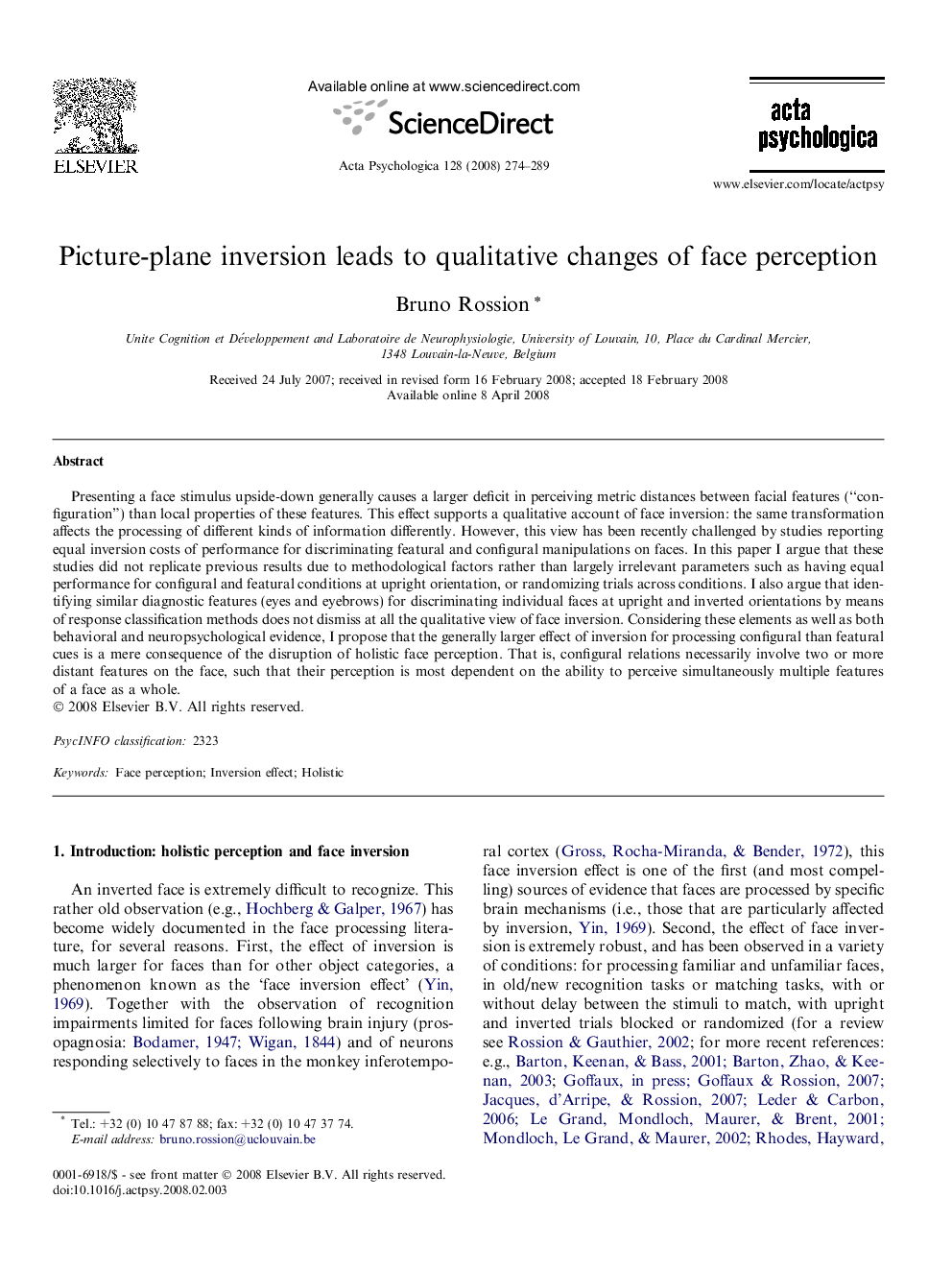| Article ID | Journal | Published Year | Pages | File Type |
|---|---|---|---|---|
| 920461 | Acta Psychologica | 2008 | 16 Pages |
Presenting a face stimulus upside-down generally causes a larger deficit in perceiving metric distances between facial features (“configuration”) than local properties of these features. This effect supports a qualitative account of face inversion: the same transformation affects the processing of different kinds of information differently. However, this view has been recently challenged by studies reporting equal inversion costs of performance for discriminating featural and configural manipulations on faces. In this paper I argue that these studies did not replicate previous results due to methodological factors rather than largely irrelevant parameters such as having equal performance for configural and featural conditions at upright orientation, or randomizing trials across conditions. I also argue that identifying similar diagnostic features (eyes and eyebrows) for discriminating individual faces at upright and inverted orientations by means of response classification methods does not dismiss at all the qualitative view of face inversion. Considering these elements as well as both behavioral and neuropsychological evidence, I propose that the generally larger effect of inversion for processing configural than featural cues is a mere consequence of the disruption of holistic face perception. That is, configural relations necessarily involve two or more distant features on the face, such that their perception is most dependent on the ability to perceive simultaneously multiple features of a face as a whole.
